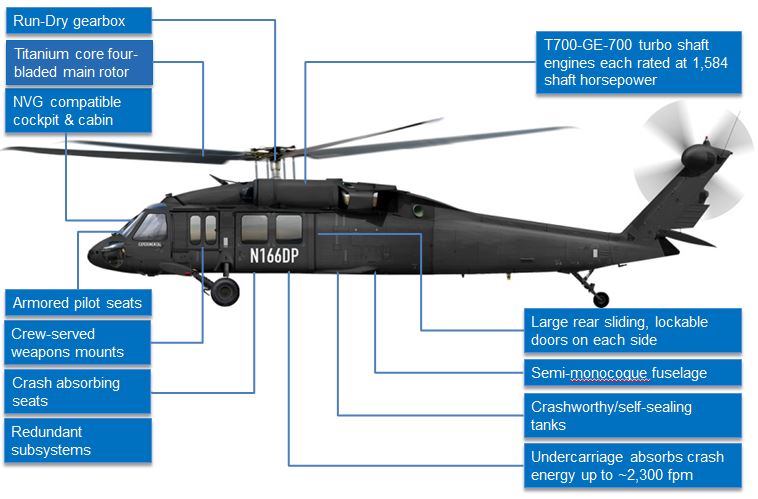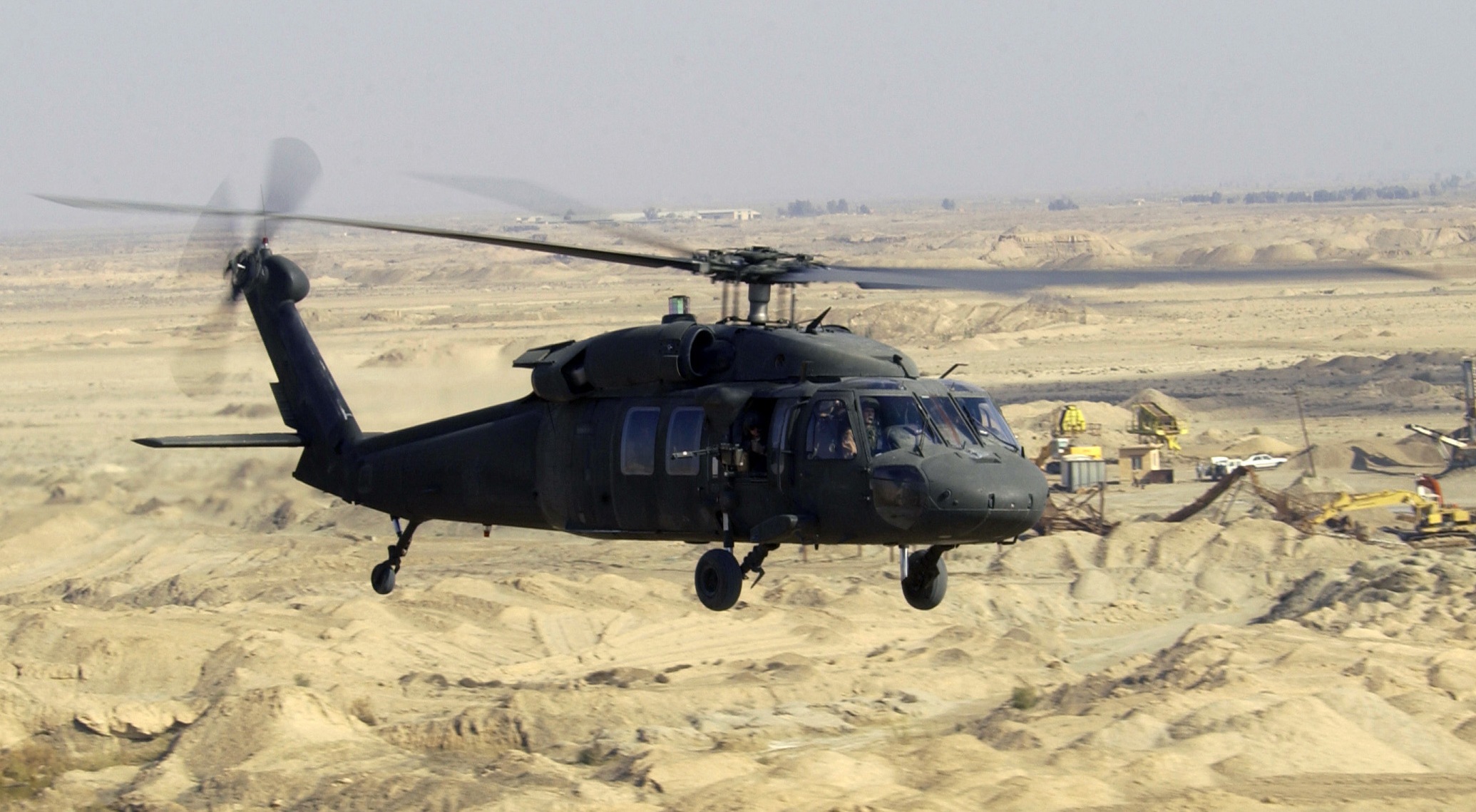Recognizing the Engineering Quality Behind the UH 60 Helicopter
Recognizing the Engineering Quality Behind the UH 60 Helicopter
Blog Article
UH-60: Innovations in Modern Helicopter Design
The UH-60 helicopter stands as a criteria in modern air travel, showcasing considerable advancements in layout and technology that cater to the progressing demands of military operations. As we check out the evolution and key developments of the UH-60, it ends up being necessary to consider how these growths affect not just present applications but also the future landscape of helicopter design.

Evolution of the UH-60
The advancement of the UH-60 Black Hawk helicopter stands for a significant turning point in aerospace engineering and army aviation. Presented in the late 1970s, the UH-60 was created by Sikorsky Airplane to meet the USA Military's demand for a flexible utility helicopter with the ability of performing a variety of objectives. Its layout emphasized toughness, rate, and ability to move, setting brand-new requirements for operational performance.
The UH-60 features a distinct four-blade blades system, which improves lift and security, permitting it to operate properly in varied atmospheres. Its airframe is constructed from advanced composite materials, adding to a reduction in weight while preserving structural stability. The helicopter's design additionally integrates improved the rules of aerodynamics, which enhances gas efficiency and raises range.
Throughout the years, the Black Hawk has actually gone through numerous upgrades to boost its abilities, consisting of boosted engines, progressed trip control systems, and modular systems for very easy maintenance and adaptability. The helicopter's ability to do objectives varying from troop transportation to medical emptying has solidified its role as a backbone of U.S. armed forces operations. The UH-60 Black Hawk stays an archetype of just how development in helicopter style can substantially influence military efficiency and operational adaptability.
Advanced Avionics Solutions
Improvements in avionics systems have transformed the capabilities of modern-day helicopters like the UH-60 Black Hawk, enhancing functional efficiency and situational recognition (UH 60). The combination of sophisticated avionics allows for enhanced navigation, trip, and communication administration, making the UH-60 more functional in diverse mission profiles
Among the essential functions is the innovative electronic cockpit, which employs multifunction screens that supply real-time data, making certain pilots have prompt accessibility to important trip info. This streamlining of details decreases pilot work and improves decision-making procedures throughout facility procedures. In addition, the incorporation of GPS and inertial navigation systems enables exact positioning and path planning, boosting mission implementation in challenging settings.
In addition, progressed avionics systems boost communication capacities with secure information links and voice interaction systems, allowing smooth coordination with ground forces and various other airplane. The assimilation of automated flight control systems even more adds to improved security and control, particularly in damaging climate condition or throughout low-altitude maneuvers.
Engine and Efficiency Enhancements
Engine performance in modern-day helicopters has actually taken a considerable leap forward, driven by advancements that boost power, efficiency, and dependability. At the center of these advancements is the fostering of even more effective turboshaft engines, particularly those using advanced materials and modern technologies that allow higher temperature tolerances and increased thrust capabilities. The UH-60 Black Hawk, for example, uses the T700-GE-701C engine, which includes a dual-channel, full-authority digital engine control system. This system enhances performance while maximizing fuel intake and reducing upkeep demands.
Additionally, the combination of engine health and wellness surveillance systems enables for real-time diagnostics and anticipating upkeep, substantially boosting functional dependability. These systems not only sharp crews to potential concerns before they become essential but likewise assist in much more effective upkeep organizing, therefore lowering downtime.

Materials and Structural Innovations
Recent developments in products and architectural design have actually reinvented modern-day helicopter construction, enhancing both performance and toughness. The introduction of innovative composite products, such as carbon fiber strengthened polymers, has actually substantially lowered weight while maintaining architectural stability. This shift not just boosts fuel performance however likewise increases payload ability, allowing helicopters like the UH-60 to perform even more diverse goals.
Additionally, technologies in aluminum alloys and titanium parts have actually added to boosted resistance to corrosion and tiredness, extending the life-span of crucial airframe components. The calculated usage of these products has actually resulted in a reduction in upkeep requirements and enhanced general operational preparedness.

In addition, the assimilation of computer-aided design (CAD) and additive manufacturing innovations has enabled more light-weight frameworks and complicated geometries, enhancing the wind resistant efficiency of helicopter styles. These innovations promote fast prototyping and production, permitting suppliers to react promptly to progressing mission requirements.
Safety and Survivability Features
Safety and security and survivability features in modern-day Check This Out helicopter style have ended up being extremely important, showing the raising demands for mission effectiveness in tough atmospheres. The UH-60 Black Hawk, a significant instance, incorporates sophisticated modern technologies to improve team and guest security. One of one of the most vital innovations is the unification of crashworthy fuel systems made to minimize the risk of fire throughout influence. In addition, the airframe is constructed with strengthened materials that soak up and dissipate energy, additional securing owners in the occasion of a collision.
The helicopter also uses a ballistic protection system, which consists of armored team seats and crucial systems protecting, reducing susceptability to tiny arms fire and shrapnel. Boosted situational recognition is achieved with innovative avionics and sensing unit modern technologies, enabling pilots to detect and stay clear of hazards successfully.
Additionally, the combination of redundancy in crucial systems-- such as double engines and Look At This several trip control channels-- ensures continued operation also if one system fails. The UH-60 is equipped with advanced emergency situation flotation devices, enhancing survivability in water landings. Jointly, these attributes not just boost the safety of employees however likewise increase mission success rates in hostile environments, demonstrating the commitment to excellence in helicopter design.
Conclusion
The UH-60 helicopter represents a significant innovation in modern air travel innovation, including innovative materials, cutting-edge avionics, and robust security features. Overall, the UH-60 offers as a standard for future growths in helicopter design, embodying resilience and adaptability in contemporary military procedures.
The UH-60 helicopter stands as a benchmark in modern air travel, showcasing substantial innovations in style and technology that cater to the advancing needs of armed forces procedures. As we explore the advancement and vital developments of news the UH-60, it becomes essential to consider exactly how these advancements affect not just present applications but likewise the future landscape of helicopter layout.
Introduced in the late 1970s, the UH-60 was designed by Sikorsky Airplane to fulfill the United States Army's demand for a functional energy helicopter capable of doing a range of objectives. The UH-60 Black Hawk remains a prime example of exactly how development in helicopter style can considerably affect army performance and functional versatility.
In general, the UH-60 serves as a benchmark for future growths in helicopter style, symbolizing strength and versatility in modern military procedures.
Report this page